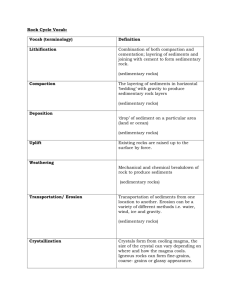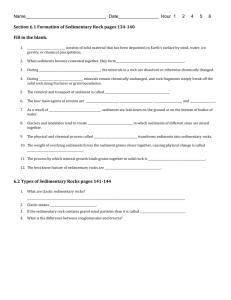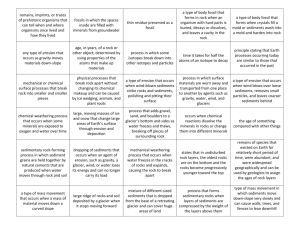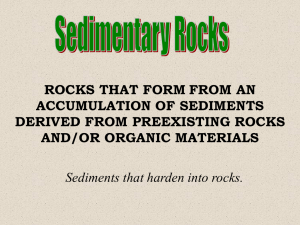Sedimentary Rocks Matching
advertisement
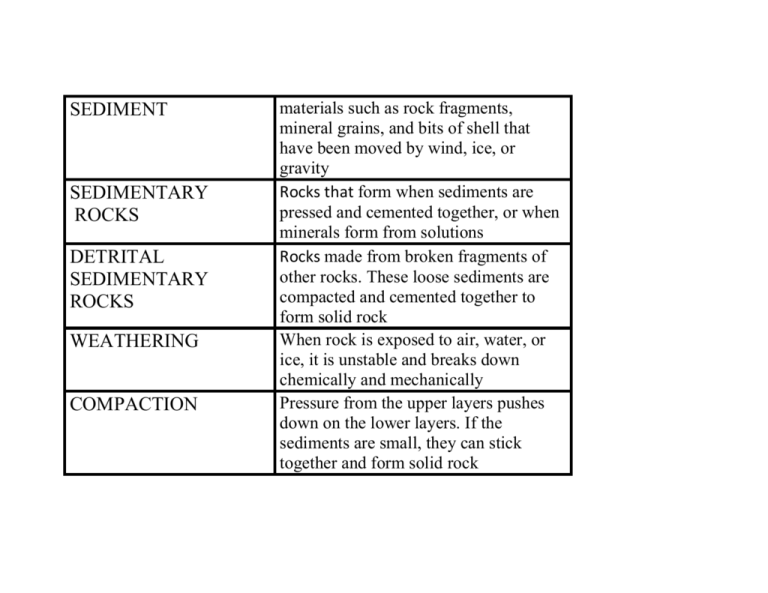
SEDIMENT SEDIMENTARY ROCKS DETRITAL SEDIMENTARY ROCKS WEATHERING COMPACTION materials such as rock fragments, mineral grains, and bits of shell that have been moved by wind, ice, or gravity Rocks that form when sediments are pressed and cemented together, or when minerals form from solutions Rocks made from broken fragments of other rocks. These loose sediments are compacted and cemented together to form solid rock When rock is exposed to air, water, or ice, it is unstable and breaks down chemically and mechanically Pressure from the upper layers pushes down on the lower layers. If the sediments are small, they can stick together and form solid rock CEMENTATION CONGLOMERATE Detrital rocks BRECCIA COAL When minerals such as quartz, calcite, and hematite are deposited between the pieces of sediment, these minerals, acting as natural cements, hold sediments together like glue The sediments that form the rocks are rounded Rocks with granular texture and are named according to the shape and sizes of the sediments that form them The sediments that form the rock have sharp angles Forms when pieces of dead plants are buried under sediments in swamps. These plant materials are chemically changed by microorganisms CHEMICAL SEDIMENTARY ROCKS LIMESTONE ROCK SALT ORGANIC SEDIMENTARY ROCKS CHALK Form when dissolved minerals come out of solutions. Minerals collect when seas or lakes evaporate, and the deposits of minerals come out of solutions form sediments and rocks Forms when calcium carbonate (CaCO3) comes out of solutions as calcite and many crystals grow together When water rick in dissolved salts evaporates, it often deposits the mineral halite which forms rock salt, which is processed and used as table salt Form when animals such as mussels, clams, corals, and snails make die and their shells accumulate on the ocean floor and are cemented together Organic sedimentary rock that is made of microscopic shells




